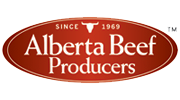Silage Variety Yield and Quality Differences
| Project Code: | 0009-028 |
| Completed: | December 2012 |
Project Title:
Alberta Regional Silage Production Trial
Researchers:
Meghan Elsen manager.lara@mcsnet.ca
Agricultural Research and Extension Council of Alberta, Battle River Research Group, Chinook Applied Research Association, Gateway Research Organization, Lakeland Agricultural Research Association, Smoky Applied Research and Demonstration Association, West Central Forage Association, North Peace Applied Research Association, Peace Country Beef and Forage
This project builds upon another ABP funded project (#0008-016), which examined the performance of a variety of forages. Although these demonstration trials are not a new idea, they are very useful to provide information on forage yield and quality on a number of forages in a number of environments. While each of Alberta’s crop zones has agronomic and forage yield information for grasses and legume varieties, as well as grain yield data, whole plant annual forage production is often lacking. This means that varietal decisions are often made based upon grain yield, which is inappropriate in a silage, greenfeed, or swath-grazing situation. In addition, quality information (digestibility and nutrient content) is not available for annual crops.
Objectives:To identify annual crop species/varieties that have superior forage production, to determine if alternative annual forage crops are a viable option when compared to conventional forage crops, to identify nutritional differences between annual crop species and assess the effect they may have on beef cattle performance and feeding system implementation, and to identify regional differences in Alberta in terms of forage production for annual crop species.
What They Did:Eleven sites were established across the province in the first two years of the trial, the third year of the trial had 10 sites. Varieties of barley, triticale, oats, and peas commonly used for silage, greenfeed and swath grazing were included, along with new varieties. Nutritional value was assessed using wet chemistry analysis for crude protein (CP), total digestible nutrients (TDN - an estimate of energy content), calcium, phosphorus, potassium and magnesium.
What They Learned:Due to the variability in weather and other growing conditions between sites and over the three years, it is difficult to directly compare varieties. In addition some varieties were removed and others added as the trial continued, making it difficult to compare varieties with one year of data to other varieties with three years of data. Weather conditions were also especially challenging over the course of this trial, with extreme drought in some areas in 2009 and flooding in other areas in 2010.
In terms of barley, yields varied greatly by location, with some varieties performing very well in some areas but not in others. By looking at average yield over all sites, both Cowboy and Seebe performed better than or just as well as the check variety (Vivar) in all three years. CP and TDN had no single varieties that outperformed the check in all three years over all locations, however; many varieties performed well in two out of the three years.
Waldern was the highest yielding oat variety over all locations and years, with Mustang also performing well in two out of the three years (compared to Murphy). All of the other varieties tested were higher in CP and TDN than the check in all three years.
Ultima and Companion triticale had the highest yields in two out of the three years of the trial. Ultima also had the highest TDN over all years. A newer variety, Tyndal, had the highest CP content for years it was included in the trial.
Pulse mixtures generally yielded very well with high protein content in all locations, however, they tended to be slightly lower in TDN. Late seeded varieties (primarily millet) tend to have lower yields, but a good nutritional profile.
What It Means:Producers generally use past experience, the advice of their neighbours, and various publications to make variety selection decisions, but whole plant forage production information can sometimes be lacking. Demonstration trials, such as this one, provide more complete information regarding forage yields, quality, and production costs, which can help them to identify the most appropriate forage variety to seed for greenfeed, silage, or swath grazing. It is important to consider the end use of the forage, as well as location, to choose the best forage for your needs. It is very important to match the variety grown to the environmental conditions on your operation. Just because a variety yields very highly and has excellent nutritional content in one area does not mean it will perform the same in another area.
Previous experience with similar Regional Variety Trails has shown that there can be a 15% increase in production from selecting the best variety for your environment over an average variety, leading to an average increase of $25/acre. While barley, oats and triticale are the most commonly used species for forage production, other annuals may also provide cost-effective choices for producers, and should be considered. Data from this project and others like it are compiled into the Alberta Seed Guide (http://www.seed.ab.ca), a useful resource for producers looking to choose the best forage variety for their purpose.












